Chopart injury
Definition
A Chopart injury is a dislocation of the talonavicular and calcaneocuboid joint that may include a combination of:
- Ligamentous injuries to the talonavicular and calcaneocuboid joints
- Fractures of the talus, calcaneus, cuboid, and/or the navicular
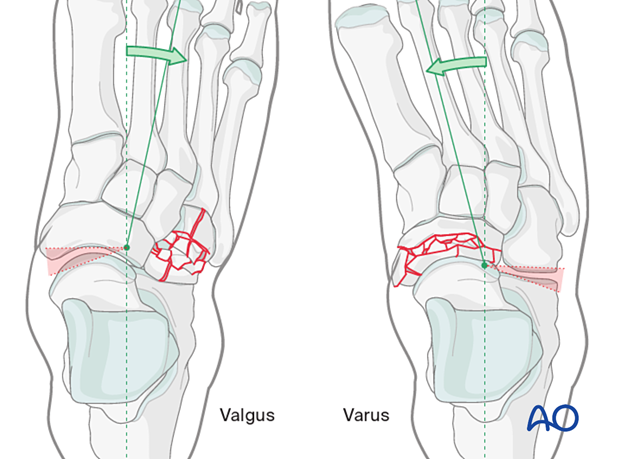
Clinical presentation
There is swelling, bruising, and point tenderness.
Complete intraarticular fractures may be associated with deformity. The higher-energy injuries (MVA or industrial/crush) are associated with significant soft-tissue trauma and other injuries to the foot; deformity is more likely to be present.
In the multi-injured patient, foot fractures are often overlooked and are picked up on the secondary survey. In the unconscious patient, one must rely on a careful physical examination. Swelling, crepitus, or a deformity are suggested signs of underlying injury and should be followed up with appropriate x-rays.
Around 30-40% of these injuries are underdiagnosed at the first instance. Therefore a high index of suspicion is required.
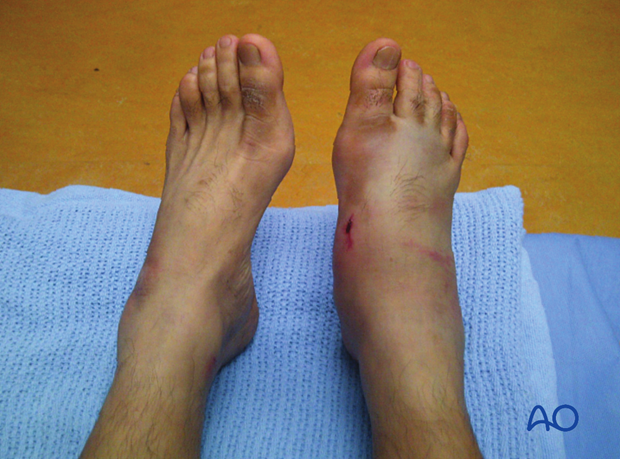
Imaging
Lateral x-ray showing a simple Chopart joint injury
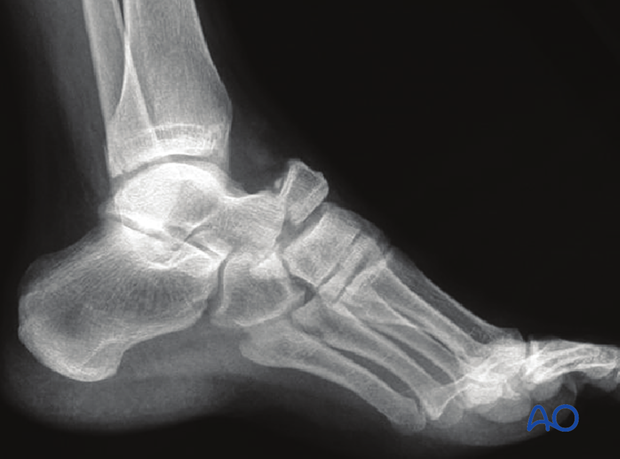
This case shows a severe Chopart injury in oblique and lateral x-rays.
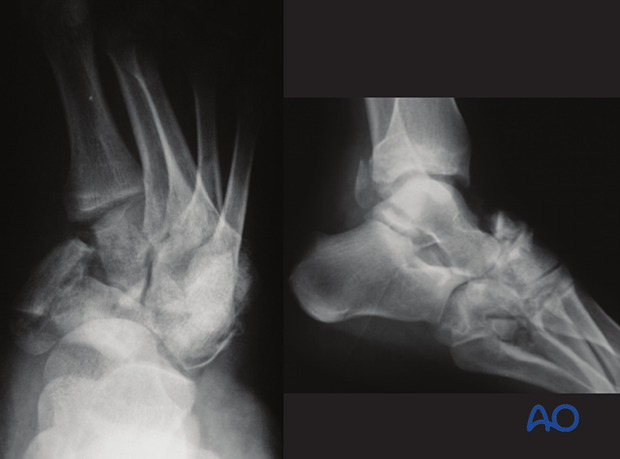
CT
CT images are routinely recorded, both for seeing the whole extent of the injury as well as to prepare a treatment plan.
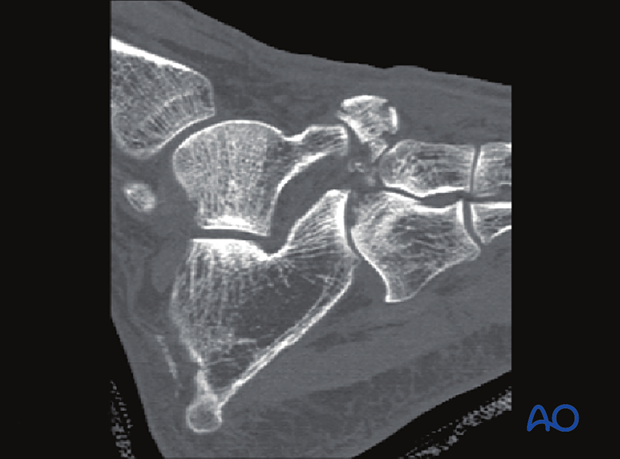
Mechanism of injury
These injuries may occur in the following ways:
- Lateral stress (abduction) in combination with axial stress. This typically results in a compression injury of the calcaneocuboid joint and a distraction injury of the talonavicular joint.
- Medial stress (adduction) in combination with axial stress. This typically results in a distraction injury of the calcaneocuboid joint and a compression injury of the talonavicular joint.
- Plantar stress (eg, heavy object falling on the foot)
- Crush injuries
Associated injuries
There may be associated soft tissue, neurovascular, bony, and ligamentous injuries in both the forefoot, anterior midfoot, and ankle.












